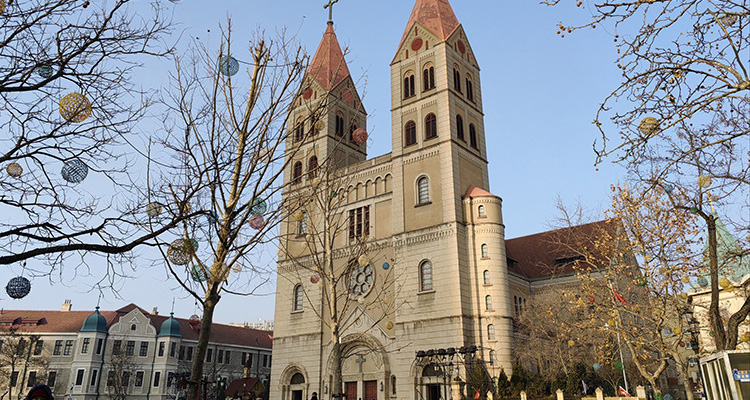St. Michael’s Catholic Church Beijing: A Gothic Landmark of Faith and History

1. A Journey Through Time: From French Missionaries to Beijing Landmark
Built in 1901 by French missionaries, St. Michael’s Catholic Church has survived wars, political changes, and decades of closure before being restored in the 1980s. Today, it stands as a living witness to Beijing’s Catholic community and a bridge between East and West.
2. Faith and Culture: A Rare “Spiritual Landmark” in Beijing
As part of the Beijing Catholic Diocese, this church remains an important place for Mass and gatherings. Beyond its religious role, it symbolizes the fusion of Western faith and local culture, making it a unique cultural relic in the city.
3. When Buildings Speak: Gothic Romance and Symbolism
The soaring spires, stained-glass windows, and arched doorways scream Gothic style. The gray stone exterior represents solemnity and eternity, while sunlight filtering through the rose windows creates a serene, sacred atmosphere inside.

4. Stepping Inside: Mass, Confession, and Storytelling Walls
Inside, the church is divided into the nave, aisles, and altar. The nave is where worshippers gather, the altar is where priests conduct Mass, and the aisles house confessionals and small chapels. The walls are decorated with paintings and statues of biblical stories—like walking into a 3D religious comic book.
5. Joining Religious Activities: The Visitor’s “Proper Way”
Sunday Mass is held in Chinese, with special ceremonies during Christmas and Easter. Visitors are welcome to quietly observe but must respect etiquette: no chatter, no disturbing worshippers. Check the church’s website for schedules—no booking needed, but arriving early is smart.
6. Visitor Etiquette: Don’t Let Shorts and Flip-Flops Ruin the Vibe
Dress modestly—no shorts, sleeveless tops, or flip-flops. Keep your voice down, silence your phone, and avoid smoking or eating inside. Photography is allowed, but no flash, and avoid shooting during services.
7. Suggested Route: 30 Minutes Through a Century of History
Plan about 30–45 minutes. Start at the main entrance, explore the nave and altar, then move to the aisles and stained-glass windows. Free tours in Chinese are available; foreign-language tours require an email booking. Afterward, stroll through the nearby Dongjiaomin Alley historic district.

8. Getting There: Subway Wins Every Time
Address: No. 13 Dongjiaominxiang, Dongcheng District, Beijing. Take Line 2 to “Chongwenmen” Station (Exit A), then walk about 10 minutes. Or hop on Bus 103 or Special 2 to “Dongjiaominxiang.” Driving isn’t recommended—parking is scarce.
9. Tickets and Opening Hours: Free but With Limits
Admission is free—no tickets required. Open Monday to Saturday, 9:00–11:00 and 14:00–16:00. On Sundays, entry is reserved for Mass participants only. Hours may change on holidays, so check online or call ahead.
10. Extra Tips: Avoid Weddings and Surprise Closures
Some areas may close during weddings or special services. Check the official website for announcements to avoid surprises. Brochures in multiple languages are available inside for international visitors.


